Doctor Who TV spin-offs’ loose ends
Series 11 has ended, but Doctor Who is the story that never ends. What did Torchwood, The Sarah Jane Adventures and Class leave unanswered?
This feature contains spoilers for every series of Torchwood, The Sarah Jane Adventures, and Class.
It’s a big universe out there and it’s only got bigger since Doctor Who returned. Returning to screens in the multi-channel age, it’s not surprising that the new series’ success has led to spin-offs. In the last 13 years, the programme has evolved into one of the BBC’s biggest global properties, creating more chances to explore the Whoniverse for its writers and producers.
Beyond the TARDIS-faring adventures of Christopher Eccleston, David Tennant, Matt Smith, Peter Capaldi, and now Jodie Whittaker, we’ve had three major spin-off series “from the world of Doctor Who” since 2005. All were made for vastly different audiences to each other, and to the inclusive family audience bracket of the parent show.
In age demographic terms, you’ve got an entire range of strategies, with Torchwood aiming above Who‘s target audience, The Sarah Jane Adventures going below, and Class going between. I think they call that “the game of Rassilon” in media circles. All three series ran to various lengths and met different levels of success, but at the moment, they have all come to an end on television.
With Doctor Who going on as a multimedia franchise, there are plenty of opportunities to pick these shows up, in novels or in Big Finish audio plays. Even as the latter company makes boxsets based on New Earth, the Doctor’s daughter, and Rose Tyler’s exploits with a dimension cannon, all three programmes left interesting loose ends in their televised forms.
What became of the characters that the Torchwood gang left un-fettled? Is London essentially alien-proof, thanks to its legion of school-aged defenders? And does Cyril Nri hold the key to all of the undiscovered mysteries of the Whoniverse? These questions and more are discussed herein…
Torchwood (2006 – 2011)
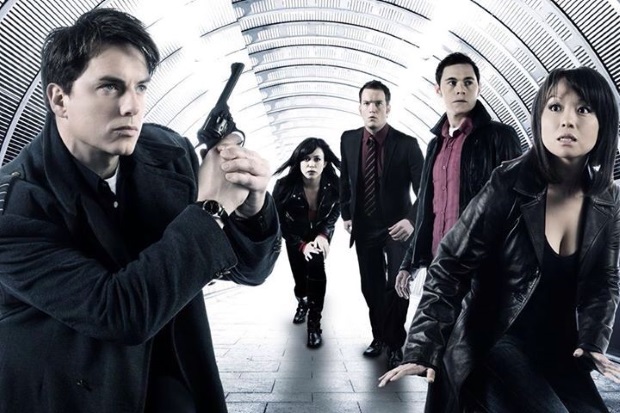
“Outside the government, beyond the police, fighting for the future on behalf of the human race.”
Spun off from: John Barrowman’s Captain Jack Harkness, Naoko Mori’s Toshiko Sato (who first appeared in Aliens Of London), and Doctor Who’s second series arc about a British anti-alien agency set up by Queen Victoria.
When was it on? Debuting on BBC Three, Torchwood originally ran for two series of 13 episodes each. The third run, titled Children Of Earth, aired as a five-day drama event on BBC One, and the 10-part fourth season, Miracle Day, was co-produced with US network Starz.
Where’s the Doctor? The Tenth Doctor lent a hand in the first series, but nothing more than that. Jack’s possession of this severed appendage would come in, er… handy when he later crossed back into Doctor Who for Last Of The Time Lords and The Stolen Earth/Journey’s End.
Loose ends… Russell T. Davies’ revival of Doctor Who was partly inspired by Buffy The Vampire Slayer and originally had an idea for a show called Excalibur. Eventually brought into the Whoniverse and named after an anagram of the show’s title, this after-dark Cardiff-set spin-off the is the nearest thing Who has had to Angel. Peaking with Children Of Earth, it’s a show that took time to hit its stride but otherwise changed so drastically between each season that there are plenty of loose ends to seize upon.
For instance, the first series culminated in the arrival of Bilis Manger, servant of Abaddon, as the Big Bad. In the finale, he summoned the towering demon to Cardiff and (in the words of Doctor Who writer Gareth Roberts) caused £20 worth of damage. Captain Jack defeats Abaddon but Bilis slips away unscathed, never to be mentioned again in the series proper. Author Gary Russell gave the mysterious character a bit more background in the 2008 novel The Twilight Streets, but the second series moved onto new stories.
That said, it’s a programme that revelled in bringing swift closure to its regulars, starting with Suzie Costello in the very first episode, and continuing when Owen, Tosh, and Ianto all got killed off in the space of just five episodes. Even the loose ends are a bit terminal when you think about them – spare a thought for Gray Harkness, who was carefully cryogenically preserved in the Hub in the second series finale, only to be blown up without ceremony in the very next episode.
Of the three major TV spin-offs, Torchwood is the only one that wasn’t prematurely cancelled for one reason or another. It had a pretty good run, thanks in part to its flexible format. It may be the least loved of the three shows that Davies was producing over time, a feat that Joss Whedon also attempted for one year only with Buffy season six, Angel season three, and Firefly, but for all its initial post-watershed rambunctiousness, it was a grower, not a shower.
“To be honest, Children Of Earth took the whole of BBC One by surprise,” Davies told SFX Magazine in 2010. “It went out in the summer, five nights a week, and you think, ‘Well, that’s a bit of a graveyard slot, isn’t it?'”Then I was getting the controller of BBC One phoning me on the Thursday going, ‘Oh my God, everyone’s watching it!’ Frankly, in this job you’ve got to make hay while the sun shines.”
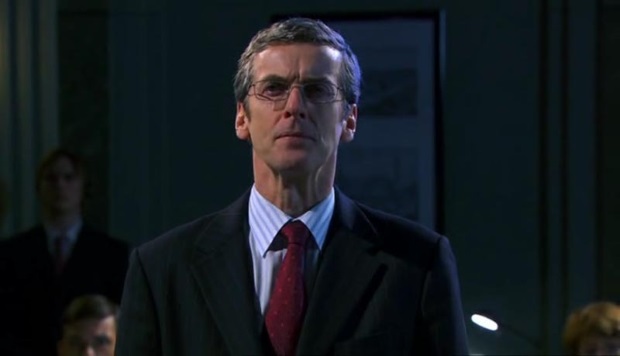
26 episodes in, the show took only five more to grow up before our eyes, with a terribly dark story about the British government trading children to monstrous beings known only as the 456. Tying things back to the Whoniverse, this series gives us another of Capaldi’s faces. Steven Moffat has since confirmed that the cosmic connection between the faces of Caecilius and the Twelfth Doctor also holds up for doomed civil servant John Frobisher, but we’re not sure the universe was trying to tell the Doctor to do more murder-suicides.
What followed was Miracle Day, a more Americanised event series that introduced CIA agent Rex Matheson in its opening moments and immortalised him at the close. In the midst of a global thriller about death becomes impossible for everyone but Jack (who’s usually a fixed point in time because of his Who doings), Mekhi Pfifer’s characters serves the same role as Eve Myles’ Gwen Cooper did in the first series, but with no further TV episodes to date, there hasn’t really been a chance to revisit him.
Also in Miracle Day, we’re introduced to the Three Families, a powerful Big Bad organisation that controls the world’s politics, media, and economy. When the Miracle is reversed by Torchwood, they speak ominously to their PR flunky Jilly Kitzinger about a “plan B”, an obvious tease for a follow-up season.
Thus far, that promise has gone unfulfilled, despite Barrowman’s tireless campaigning for the show to come back, including occasionally throwing shade at Steven Moffat for no reason. Current Who showrunner Chris Chibnall hasn’t expressed any interest in bringing it back either.
Nevertheless, Torchwood has continued on Big Finish, as Davies has collaborated with writer James Goss to continue the show with an official fifth and sixth series in audio form. They’ve even got around to exploring the Three Families, albeit as playthings of the equally vaguely named alien cabal, the Committee.
As it stands, the fifth season, Aliens Among Us, wrote out Myles (unexpectedly, Gwen retires to spend time with her husband and baby instead of dying terribly) and brought back Torchwood One head honcho Yvonne Hartman, aka Tracy Ann Cyberman. The sixth season, God Among Us, is currently underway. Just as Buffy had an official continuation in comics, the show goes on in another medium for Cardiff’s own Scoobies. (Or Shaggies!)
The Sarah Jane Adventures (2007 – 2011)
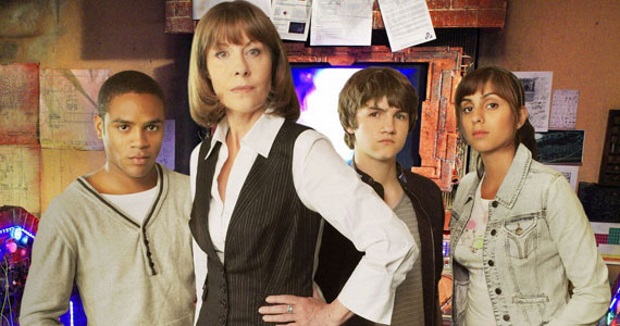
“13 Bannerman Road is where Sarah Jane Smith lives.”
Spun off from: The character Sarah Jane Smith, who originally travelled with the Doctor during the 1970s (or was it the 1980s?) and returned in 2006’s School Reunion, which served as something of a backdoor pilot in retrospect.
When was it on? Following an hour-long pilot which was broadcast on New Year’s Day 2007, The Sarah Jane Adventures ran for five series on CBBC, comprising 26 two-part stories.
Where’s the Doctor? As a more kid-friendly spin-off than Torchwood, the show featured guest appearances from two different Doctors. The Tenth Doctor gate-crashed The Wedding Of Sarah Jane Smith during his final year and the Eleventh Doctor had his first and only RTD-penned outing in The Death Of The Doctor.
Loose ends… The Sarah Jane Adventures came to an end when Elisabeth Sladen tragically passed away in 2011, mid-way through filming the fifth series. While it’s a shame that some of the other characters never got a proper send-off either, there’s just no carrying on without Sladen, who was better than ever before once she finally got to take the lead role.
Prior to 2005, the nearest we got to any kind of Doctor Who spin-off on TV was K9 & Company, a 1981 Christmas special in which Sladen was first billed, but somehow still secondary to the robot dog as far as the title was concerned. Having made School Reunion to stand alone, Davies pitched a spin-off series for Sarah Jane to CBBC at the point when they were looking for a young Doctor show, which he immediately vetoed.
Undoubtedly the best of the three New Who spin-off series, The Sarah Jane Adventures sees the former companion pick up young companions of her own, including alien experiment and surrogate son Luke, his friend Clyde, and next door neighbours Maria and then Rani. At its best, it was as good as Who, sticking closely to the classic cliffhanger-driven format of the parent show, and it was hugely popular too. At the time that Sladen passed away, it had already been recommissioned for its fifth and sixth series.
With these plans in mind, there are a couple of story ideas that sadly weren’t realised. For instance, Davies has previously spoken about how he planned to bring back Sophie Aldred as the Seventh Doctor’s companion Ace in the sixth series, along with another repeat appearance for Katy Manning as Jo Grant. There’s not a Who fan alive who couldn’t have got on board with that.
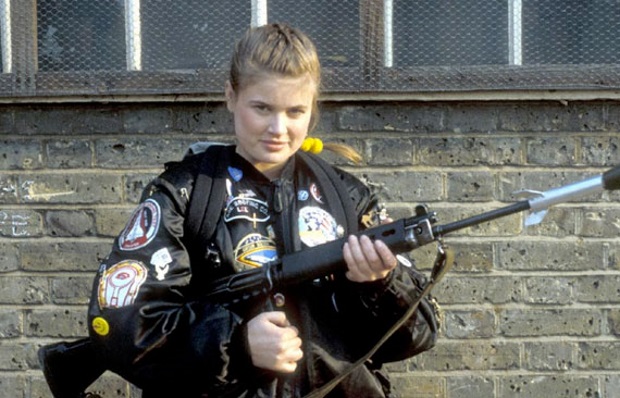
Luke left Bannerman Road to go to university in the first story of the abbreviated final run, but Clyde and Rani are popular characters who just disappeared with the series. For a while, fans speculated that they might show up in Doctor Who during Matt Smith’s era, but it’s hard to see how you do that without addressing what Sarah Jane is up to. Unlike the Brigadier, who was movingly sent off in The Wedding Of River Song and then referenced many times in Moffat’s scripts thereafter, it’s only right that her story is left open.
There’s also the question of Sky, another alien child who moved in as Luke was moving out. She’s dropped off in the first story by the Shopkeeper, a mysterious Doctor-like wanderer who had first appeared in Series 4’s Lost In Time. The writers intended to bring the Shopkeeper back and reveal more of his true nature in the unfilmed finale, The Battle For Bannerman Road, but it wasn’t to be. Both Davies and Neil Gaiman have suggested he was an incarnation of the Corsair, the Time Lord buccaneer mentioned in The Doctor’s Wife.
These bits aside, writer Gareth Roberts has always said that The Sarah Jane Adventures was intended as “a full-blooded drama” and not “just a children’s show”. While more kid-friendly by design, the show was always telling emotional and ambitious stories and it was always particularly good when exploring Sarah Jane’s inner life. It’s a show that could have ran and ran, and was meant to.
According to script editor Brian Minchin: “Russell emailed me not so long ago saying, ‘We shouldn’t have stopped, should we?’ He thinks we cancelled the show out of shock. And he’s right. It was such a lovely show, and Lis was fantastic.”
In the end, it’s impossible to imagine The Sarah Jane Adventures without Sarah Jane. The creative team moved on to create the barmy Wizards Vs Aliens for CBBC, but quite rightly, the world of The Sarah Jane Adventures has remained untouched by the BBC and Big Finish. If only there had been some sort of London-based spin-off based around higher education in which it could have made sense for Clyde and Rani to show up…
Class (2016)
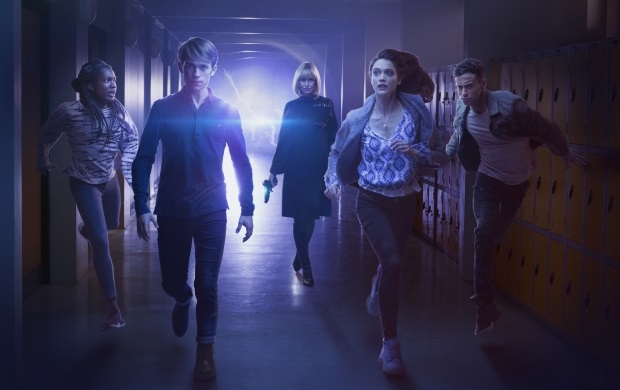
“Watchin’ my youth slip away/Surely is a crime…”
Spun off from: An unused Doctor Who episode idea by creator Patrick Ness, set in the recurring locale of Coal Hill Academy, where Clara Oswald worked as a teacher from The Day Of The Doctor onwards.
When was it on? Produced for the now online-only BBC Three, Class premiered in late 2016, during the year-long gap between The Husbands Of River Song and The Return Of Doctor Mysterio. It also had a late-night broadcast run on BBC One. It was officially cancelled just over a year later.
Where’s the Doctor? The Twelfth Doctor pops in for a cameo at the end of the first episode to explain the space bunghole that’s localised around Coal Hill School, furnish Ram with an advanced prosthetic leg, and make some frankly unnecessary parting remarks about media studies.
Loose ends… If you were only going to pick one idea for a spin-off from the Steven Moffat years, we’re not sure it would be Class. A River Song mini-series might have been fun, and the Paternoster Gang seemed to be just waiting for their Victorian-era procedural sitcom, but Coal Hill School wound up being the setting that inspired the only spin-off series of Moffat’s era.
Clara’s place of work clearly started as a canny Easter egg, revisiting the London locale that’s been the setting for episodes such as An Unearthly Child, Remembrance Of The Daleks, and The Caretaker over the course of the programme’s history. Primarily known for his young adult novels, Ness’ vision is very Buffy, complete with arch-pop culture references to, er… Buffy in the first episode.
Like Torchwood, it’s a post-watershed show centred around a rift in time and space, and it also features Capaldi at one point. In full Doctor mode at this point, he effectively deputises a Breakfast Club’s worth of mismatched students, including refugee alien prince Charlie and his nemesis-turned-bodyguard Miss Quill, to defend London from whatever comes through. The eight-episode series arc focuses on the genocidal Shadow Kin, who drove Charlie and Quill to Earth and want to get their hands on a relic that contains the souls of the prince’s dead people.
The cancellation of the show was all the more drastic because the finale ended with such a large concentration of cliffhangers. Having battled the Shadow Kin, plucky April has ended up swapping bodies with their leader, two of the other kids have been tragically orphaned, and Quill is carrying an alien’s baby to term, quicker than you’d expect.
And then there’s that other scene. Teasing another season, headmistress Dorothea goes to apologise to the school governors in their hidden cathedral-like spaceship. Unforgiving, they set a Weeping Angel on her and she’s brutally – wait a second, is that Cyril Nri again? Bizarrely crossing the streams, that’s twice that the actor has turned up as separate mysterious characters in spin-off shows, only for the show to end before we can find out who he is.
On the other front, Ness has spoken about how he planned to show us a Weeping Angel civil war, as well as addressing Quill’s baby and April’s monstrous new form. However, he confirmed the following year that he would not be returning to write further episodes even if the show was recommissioned, due to the impending change of executive producer bringing about a seismic change in the Whoniverse.
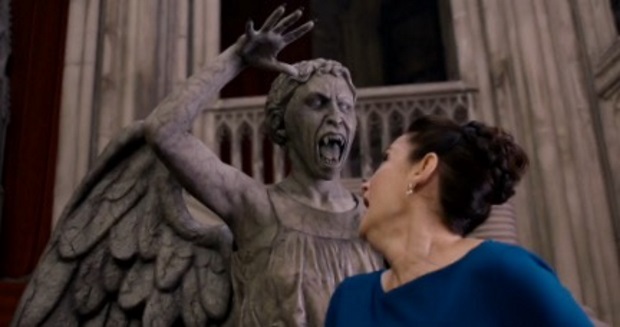
Having now seen Chibnall’s first series as showrunner, he was right. It’s hard to imagine Class series two existing alongside it. Heck, it even feels as if Moffat was quite hands-off, in contrast to RTD’s spin-offs being full of his influence. In terms of carrying on, there is a series of full cast Class audio plays from Big Finish, but they’re all set during the first season, rather than afterwards.
All in all, it feels like something of a missed opportunity. Whether extracurricular or extraterrestrial, its sixth form pursuits felt muddled, but there was an undeniably talented ensemble here (of which Katherine Kelly was the MVP, playing Quill as a frazzled Spike/Giles hybrid) and there was certainly something here. Even if it doesn’t seem to be built to run and run, it’s a shame the programme never had the time to find its feet as Torchwood did.
Released without much fanfare in a year with no other new Who available, it might have performed better later, now that the BBC has got its act together in promoting shows like The A List and Clique. It seems almost certain that any further Class dramas from Big Finish will have to address the cliffhangers eventually, but Ness has ruled out writing any more stories in that world for himself, even if he was asked. On television at least, Class has definitely been dismissed.